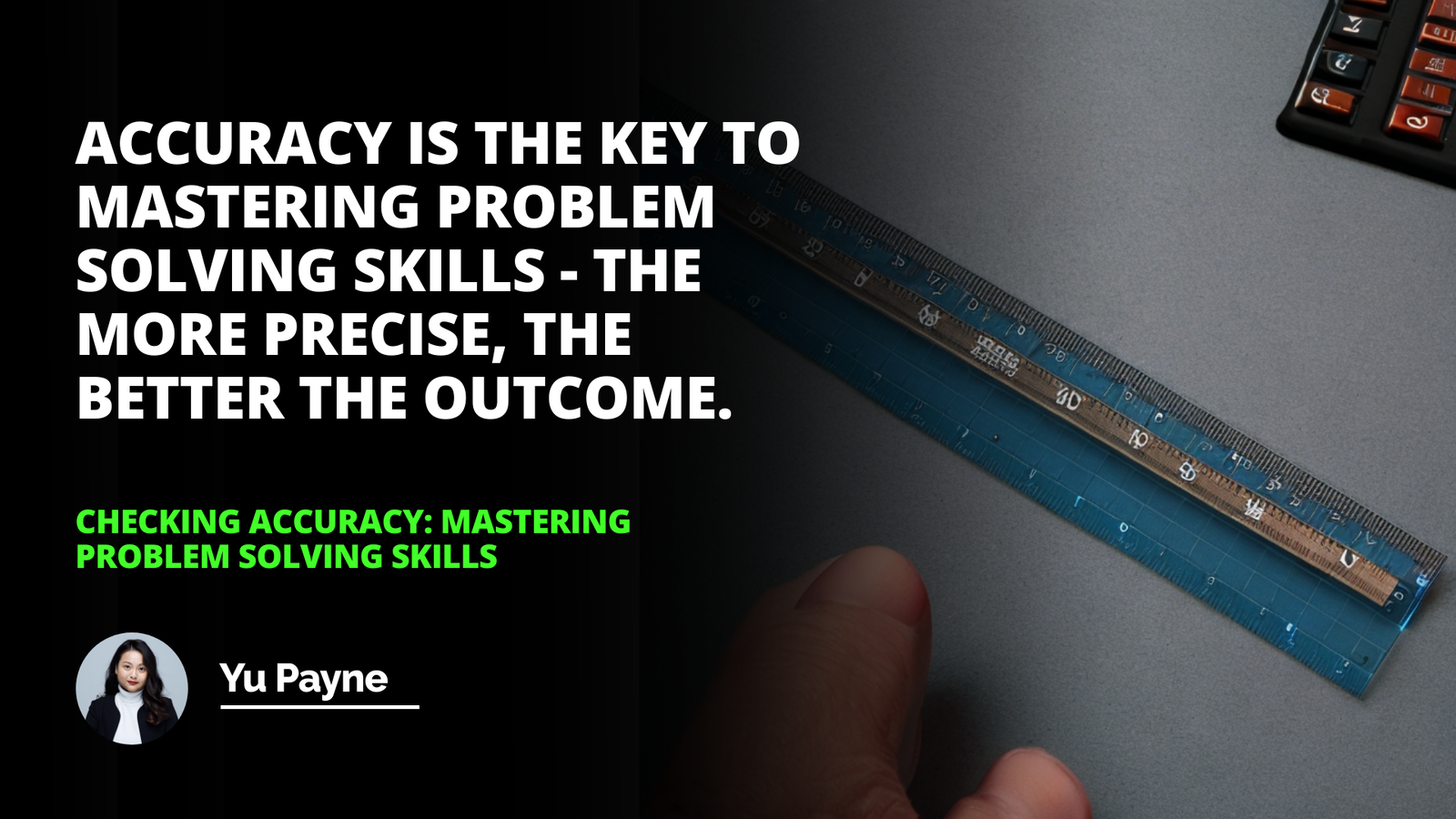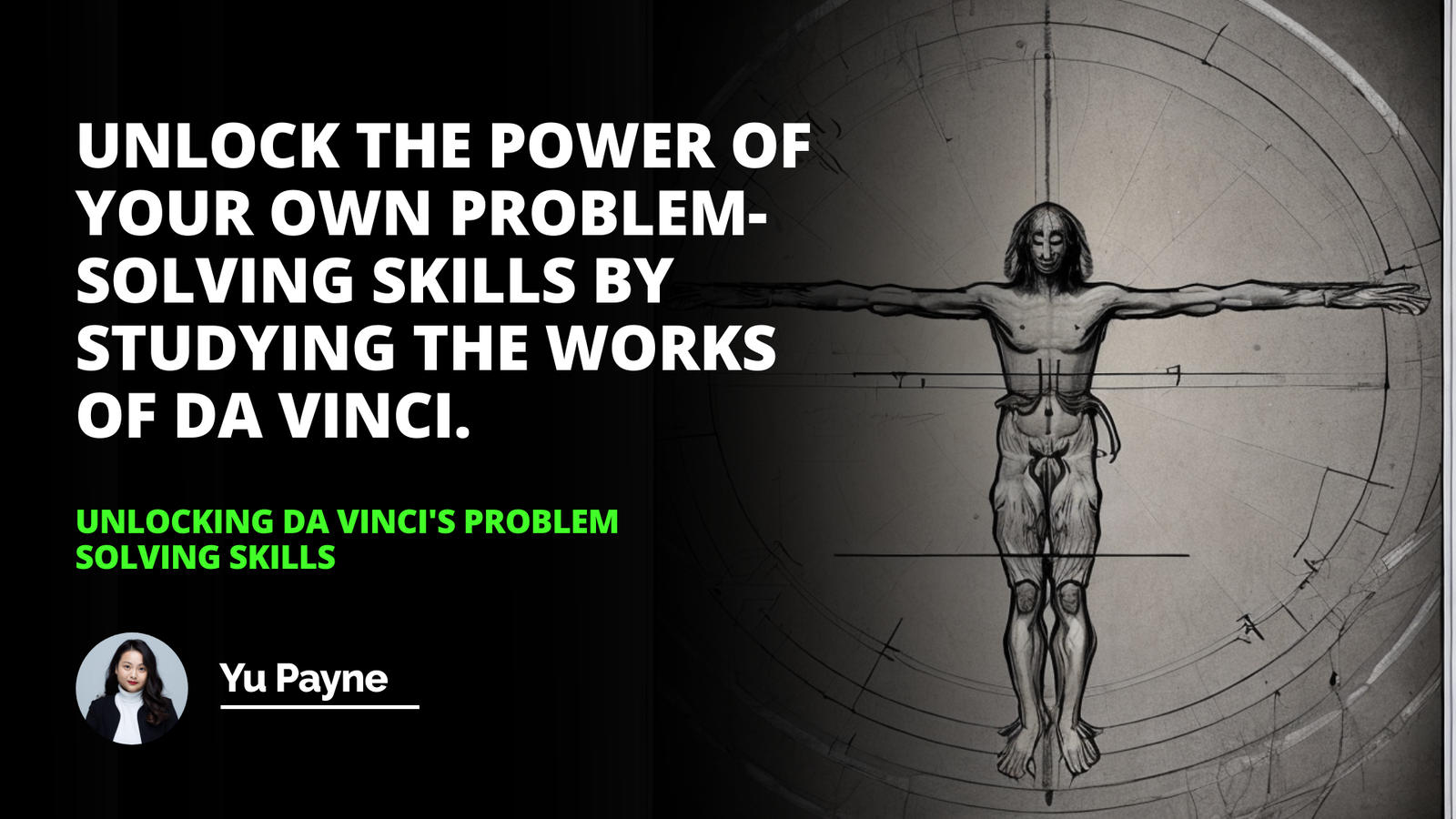
In an era where complexity often challenges the limits of human comprehension and problem-solving abilities, techniques that simplify and streamline our approach to tackling such challenges are invaluable. Problem decomposition is one such strategic method that dissects complex issues into more manageable subcomponents, enhancing our capacity to understand and address them effectively. This division not only allows for targeted analysis and resolution but also bridges the cognitive gap between an issue's overwhelming entirety and the actionable steps needed to resolve it. Recognizing its significance, numerous fields, from software engineering to organizational management, regularly employ problem decomposition.
This article aims to explore the multifaceted concept and process of problem decomposition, its principles, benefits, and real-life applications, weaving together a discourse that is as theoretically rich as it is pragmatically vital.
Concept of Problem Decomposition
Definition of Problem Decomposition: Problem decomposition refers to the methodical breakdown of a complex issue into smaller, more tractable pieces or sub-problems. This analytical approach takes inspiration from both computer science and cognitive psychology, as large-scale problems are rarely solvable in a single leap of thought or action. Viewing problems through the lens of decomposition enables a more granular and focused examination, facilitating progress where a monolithic approach might stumble.
Theoretical Background: The theoretical foundations of problem decomposition lie in the rich interplay between systems thinking and information processing theories. Systems thinking, with its emphasis on interrelationships and patterns of change rather than static snapshots, allows for a holistic view even as one disassembles the problem into its constituent parts. Information processing theory further enriches this approach by mapping out how human cognition organizes and manipulates data, offering insights into how complex problems can be sorted into hierarchies or sequences for more efficient resolution.
How Problem Decomposition Connects to Other Concepts in Problem-solving: Problem decomposition is intricately connected to other problem-solving techniques such as abstraction, pattern recognition, and algorithm design. For instance, abstraction helps in disregarding irrelevant details during the decomposition process, while pattern recognition can enable the identification of recurring sub-problems that may have standard solutions. All these concepts are interdependent and often coalesce to form comprehensive problem solving techniques courses or online certificate courses aimed at equipping individuals with a robust problem-solving toolkit.
The Process of Problem Decomposition
Breaking Down the Problem: Breaking down a problem begins with an understanding of its scope and boundaries. By deconstructing the issue step-by-step, one can uncover underlying structures and processes that may not be evident at first glance. This stage often involves diagrammatic representations such as flowcharts or mind maps to visually articulate the fragmented elements of the problem, ensuring no key facet is neglected.
Identifying Sub-problems: Once the primary issue is disaggregated, the resultant sub-problems must be carefully identified and articulated. These should be defined in such a way that they are independent enough to be solved in isolation, yet when synthesized, contribute to solving the overarching problem. The art of discerning which sub-problems merit attention is a skill refined with experience and critical thinking.
Prioritizing & Approaching Sub-problems: After identification, sub-problems are prioritized based on factors such as urgency, importance, and the resources required to solve them. This helps in allocating attention and resources pragmatically. Each sub-problem is then approached with targeted problem-solving strategies, often relying on domain-specific knowledge or expertise.
Step-by-Step Guide on Carrying Out Problem Decomposition
Define the Objective: Clearly defining the goal or objective at the beginning of the decomposition process is crucial. This serves as the anchor for all subsequent actions and helps maintain focus as the problem is dissected further. The objective should be concise and measurable, providing a clear endpoint to the problem-solving endeavor.
Identify the Components Involved: The next step involves a meticulous audit of the components or elements that constitute the problem. Each component's functionality, relevance, and impact on the larger issue are considered. This detailed inventory provides a comprehensive understanding of the problem's anatomy, setting the stage for the precise isolation of sub-problems.
Analyze Relationships Among Components: Exploring how the identified components interact is essential for successful decomposition. These interrelations often determine the complexity of the problem and can identify potential bottlenecks or leverage points. Analyzing these dynamics can illuminate pathways for effective intervention and resolution.
Develop a Problem-solving Strategy: With the components and their interactions understood, developing a targeted problem-solving strategy becomes possible. This may include creating algorithms for automation, devising criteria for decision-making, or forming hypotheses for experimental validation. The strategy should be adaptive and scalable, able to contend with the problem's evolving nature.
Key Principles for Effective Problem Decomposition
Understanding the Whole Problem Context: A profound comprehension of the entire problem context is indispensable for effective decomposition. Grasping the big picture prevents the pitfall of becoming too engrossed in minute details and losing sight of the primary objective. This duality of focus—simultaneous attention to the macro and micro—is a balancing act that underpins successful problem-solving.
Maintaining Balance between Detail and Overview: As one delves into the specifics of each sub-problem, it is imperative to maintain a balanced viewpoint. Focusing too closely on the details can cause one to miss overarching patterns, while a too-loose overview could lead to a misapprehension of crucial nuances. Striking the right balance ensures a comprehensive and accurate approach to problem-solving.
Seeking External Perspectives when Necessary: Occasionally, even seasoned problem solvers encounter stalemates when dealing with complex issues. In such instances, seeking external perspectives or consulting with cross-disciplinary experts can provide fresh insights and innovative approaches to problem decomposition. Collaboration across different areas of expertise often yields the most creative and effective solutions.
Iterative Approach in Problem-solving: Problem-solving is rarely a linear journey; it often requires an iterative process of testing, feedback, and refinement. Effective problem decomposition is accommodating to such iterative cycles, allowing each round of analysis to build upon the insights and partial solutions obtained from previous ones. Continual iteration fosters a deeper understanding of the problem and more robust solutions.
Benefits of Problem Decomposition
Enhancing Understanding of the Problem: Decomposition facilitates a more profound understanding by revealing the underlying structure and factors contributing to the complexity of the problem. It equips problem solvers with a clear roadmap that delineates the different elements that need addressing, which in turn, catalyzes the formation of more insightful and effective solutions.
Makes Large And Complex Problems Manageable: By breaking down a formidable issue into smaller, more digestible components, problem decomposition transforms the seemingly insurmountable into a series of achievable tasks. This not only simplifies the problem-solving process but also reduces the cognitive load on the individuals or teams engaged in resolving the issue.
Facilitating Team Collaboration: When a complex problem is partitioned into sub-problems, different team members can take ownership of separate units, capitalizing on their specific expertise or interests. This collaborative decomposition fosters interdisciplinary teamwork and ensures a multifaceted examination and resolution of the problem.
Encouraging Efficient Use of Resources: Problem decomposition allows for the strategic allocation of resources – whether they be time, intellectual capital, or material assets – towards targeted sub-problems. This judicious use of resources avoids wasteful expenditures and ensures that efforts are concentrated where they can make the most significant impact.
Real-Life Examples of Problem Decomposition
Problem Decomposition in Technology Development: In software engineering, problem decomposition is routinely used in developing complex systems. By breaking down the development process into smaller tasks such as coding individual modules or testing isolated functions, engineers can build intricate systems incrementally and systematically.
Problem Decomposition in Business Strategy: Businesses often face complex decisions involving multiple variables, from market conditions to internal processes. Through problem decomposition, strategists can dissect these multifaceted issues, enabling a thorough analysis that incorporates diverse business functions and leads to more informed decision-making.
Problem Decomposition in Product Design: Designing a new product can be daunting, given the myriad factors involved, from user experience to manufacturing constraints. By decomposing the problem, product designers can tackle specific aspects of the design process, from initial sketches to prototype testing, leading to the development of well-thought-out and innovative products.
Challenges in Problem Decomposition
Dangers of Oversimplification: While breaking down problems is generally beneficial, there is a risk of oversimplifying complex issues to the point where the solutions derived no longer adequately address the core problem. It is crucial to ensure that the decomposition does not strip away essential nuances that are critical to understanding and solving the issue.
Risks of Missing Out on the Big Picture: An intense focus on sub-problems could potentially lead to a loss of perspective on the overall problem. Solvers must remind themselves of the end goal and ensure that the solutions to sub-problems are coherent when pieced together in the context of the larger problem.
Issue with Time Consumption: Decomposing complex problems is time-intensive and may not be the most efficient approach when swift action is required. Problem solvers must weigh the necessity for thoroughness against the urgency of the situation, balancing the depth of decomposition accordingly.
In conclusion, the exploration of problem decomposition illustrates its indispensable role in navigating the labyrinth of modern-day challenges. From enhancing comprehension to fostering collaboration and ensuring efficient resource use, this technique stands out as a cornerstone in the realm of problem-solving strategies. Whether applied to technology, business strategy, or product design, the principles of problem decomposition hold steadfast, guiding us through intricate issues with clarity and precision.
The real-world examples discussed underscore its practical value, while the discussion of challenges offers a note of caution to maintain balance and vigilance. As we continue to confront increasingly complex problems, the encouragement for ongoing learning and the application of problem decomposition techniques becomes ever more pertinent. The investment in knowledge, such as partaking in online certificate courses that elucidate these methods, will undoubtedly yield dividends in professional and personal capacities alike, empowering us to dismantle complexity and pave the way for effective, innovative solutions.
Frequently Asked Questions
What are the significant steps involved in the process of problem decomposition and how do these steps strategically address complex issues?
Understanding Problem Decomposition
Problem decomposition refers to breaking down complex issues. It involves several significant steps. These steps simplify understanding and tackling problems effectively.
Identify the Core Issue
First, pinpoint the core problem. This requires critical thinking. It means discerning the main challenge. In complex scenarios, the central problem may not be obvious. Thorough analysis is crucial here.
Divide into Smaller Components
Next, break down the main issue. Divide it into smaller, manageable pieces. Smaller components are easier to handle. They provide clarity and focus. Think of it like disassembling a puzzle.
Prioritize Components
It's important to set priorities. Not all pieces are equally significant. Determine which parts are crucial. Focus on these first. Setting priorities streamlines the solving process.
Understand Interconnections
Recognize how components fit together. Each part often impacts others. This step involves mapping relationships. The aim is to understand component interdependencies.
Develop Strategies for Each Component
Now, create strategies for each piece. Smaller issues require tailored approaches. This process facilitates thorough solutions. It allows for more specialized interventions.
Integrate Solutions
After solving each part, integrate solutions. The goal is to form a cohesive response. This step ensures the final solution addresses the entire complex issue.
Assess and Refine
Finally, assess the outcome. Is the complex issue resolved? If necessary, refine solutions. Continual improvement is a key part of problem-solving.
Problem decomposition is a powerful tool. It allows us to conquer even the most daunting challenges. It turns the insurmountable into something manageable. Remember, even the longest journey begins with a single step.

How does problem decomposition enhance the efficiency of a solution for complex tasks in the context of computer science?
Understanding Problem Decomposition
Problem decomposition is vital. It breaks down complex tasks. These smaller parts are more manageable. Simplicity is key for solution efficiency.
The Role of Problem Decomposition
Complex tasks often intimidate. Many moving parts obscure solutions. Decomposition reduces this complexity. It allows focus on individual components.
Clarity Increases
Each subtask becomes clear. Goals for these are straightforward. Work on them proceeds with focus. This clarity fosters effective solutions.
Overlapping Subproblems Identified
Problem decomposition often reveals overlaps. These shared subtasks can be optimized. Solving once and reusing saves time.
Parallel Processing Becomes Possible
Independent subtasks emerge from decomposition. They can be worked on simultaneously. Parallel processing shortens overall task time.
Benefits to Problem-Solving Efficiency
- Modularity Ensures Flexibility
Each module is a standalone component. Changes in one need not affect others. This design facilitates easier revisions.
- Testing Becomes Simpler
Testing smaller, independent units is straightforward. Bugs become easier to isolate. Fixing them is quicker.
- Maintenance Improves
Well-defined modules are easier to maintain. Understanding them requires less cognitive load. Updates and improvements become less cumbersome.
- Collaboration is Enhanced
Teams can divide subtasks efficiently. Collaboration thus improves. Each member can contribute effectively.
Practical Examples in Computer Science
Algorithms Benefit Immensely
Decomposition benefits algorithm development. It encourages divide and conquer strategies. Efficiency often leaps forward.
Software Development Becomes Agile
Modular software development is agile. It allows for incremental improvements. Stakeholder feedback integrates seamlessly.
Data Processing Accelerates
Big data processing uses decomposition. Data splits into chunks. Each chunk processes in parallel.
Concluding Thoughts on Efficiency
Decomposition is a problem-solving linchpin. It aligns with our cognitive abilities. We tackle complexity piecemeal. Solution efficiency inevitably increases. In computer science, this means faster, better, and more reliable systems. Decomposition is not just a tactic. It is an essential strategy for effective problem-solving.

Could you provide an insight into the real-world applications and benefits of using the problem decomposition approach in business or scientific research?
Understanding Problem Decomposition
Problem decomposition stands as a crucial strategy in both business and scientific endeavors. It involves breaking down a complex problem into manageable sub-problems. This approach allows teams to tackle issues systematically. It can lead to more effective solutions.
Real-world Applications in Business
Simplifying Complex Problems
In business, leaders often face challenges that seem insurmountable. Decomposition makes these challenges more approachable. Managers can delegate tasks to different teams. Each team addresses a smaller, specific issue. This division of labor is efficient.
Enhancing Collaboration
Problem decomposition enhances teamwork. It promotes collaboration across departments. Individuals bring diverse expertise to the table. They solve various aspects of the puzzle together. This unity fosters innovation and creative solutions.
Streamlining Project Management
Project managers rely on decomposition. They break projects down into tasks and subtasks. This creates clarity around project scope. It helps in tracking progress. Teams can address issues promptly. They can adjust plans more flexibly, too.
Boosting Efficiency
Efficiency is key in business. Decomposition allows for parallel processing. Different teams work on different sub-problems at the same time. This reduces the time taken to solve the larger problem. Quick resolution benefits the business's bottom line.
Real-world Applications in Scientific Research
Tackling Complex Scientific Problems
Science often deals with multifaceted issues. Decomposing these into smaller, quantifiable experiments is valuable. Researchers can focus on a single variable or aspect. They can then build an understanding of the larger problem.
Facilitating Interdisciplinary Research
Decomposition invites collaboration from various scientific fields. Complex problems may require expertise from different disciplines. Each researcher or group can contribute their knowledge. They work on a segment of the larger question.
Aiding in Hypothesis Testing
Scientists test hypotheses in controlled settings. Decomposition allows for multiple, simultaneous tests. Each test examines a part of the overall hypothesis. This adds depth to the research. It provides a comprehensive view of the phenomenon under scrutiny.
Enhancing Publication and Funding Opportunities
Researchers may find it easier to publish results of smaller studies. These studies can form part of a series. They can build a story around a central research question. Funding agencies might be more willing to invest. They see progress in stages and understand the trajectory of the research.
Benefits of Problem Decomposition
- Enhanced focus on individual components
- Improved risk management as problems become clearer
- Resource optimization by allocating according to need
- Increased agility in responding to issues that arise
- Greater chances for innovation through collaborative effort
The problem decomposition approach lends itself to a strategic and methodical way of addressing complex challenges. In both realms of business and scientific research, it not only simplifies the tasks at hand but also enriches the quality and effectiveness of the solutions derived. Through its multifaceted benefits, problem decomposition proves to be an indispensable tool for success and progression.



